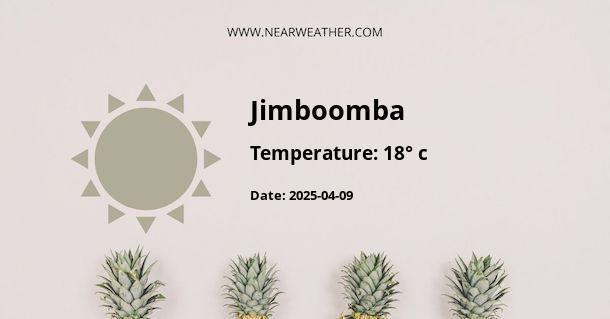Climate and Weather in Jimboomba, Australia
Jimboomba is a charming suburb located in Queensland, Australia. As with any location, understanding the climate and weather patterns is essential for residents, visitors, and businesses. In this article, we will explore the climate of Jimboomba throughout the year, including temperature variations, rainfall levels, and other significant weather phenomena.
Temperature
Jimboomba experiences a warm and temperate climate throughout the year. Summers, which last from December to February, are generally hot with average maximum temperatures ranging from 28 to 32 degrees Celsius (82 to 90 degrees Fahrenheit). January is typically the warmest month of the year in Jimboomba.
Winters, on the other hand, are mild and dry, with average maximum temperatures ranging from 19 to 22 degrees Celsius (66 to 72 degrees Fahrenheit). The coldest month is usually July.
Overall, Jimboomba enjoys a pleasant climate, with temperatures rarely dropping below freezing or reaching extreme highs.
Rainfall
Jimboomba experiences a moderate amount of rainfall throughout the year. The wettest months are typically between November and March, coinciding with the summer season. During these months, the region receives an average monthly rainfall of around 100 to 150 millimeters (4 to 6 inches).
Conversely, the driest months are usually between May and September, aligning with the winter season. During this period, rainfall levels drop to an average of 20 to 40 millimeters (0.8 to 1.6 inches) per month.
The rainfall in Jimboomba is relatively evenly distributed throughout the year, ensuring a consistent water supply for vegetation and agricultural activities.
Extreme Weather Events
While Jimboomba generally enjoys a mild climate, it is important to be aware of potential extreme weather events that can occur in the region.
1. Thunderstorms: Jimboomba, like many parts of Queensland, experiences thunderstorms during the summer months. These storms can bring heavy rain, lightning, and strong winds.
2. Heatwaves: During the summer, Jimboomba can experience heatwaves, with temperatures soaring above 35 degrees Celsius (95 degrees Fahrenheit) for prolonged periods. It is important to stay hydrated and take necessary precautions during these heatwaves.
3. Bushfires: As with many parts of Australia, Jimboomba is susceptible to bushfires, especially during the dry season. Residents should stay informed about fire danger ratings and follow any evacuation or safety instructions provided by authorities.
Climate Graph
To provide a visual representation of the climate in Jimboomba, let's take a look at the following climate graph:
| Month | Maximum Temperature (°C) | Minimum Temperature (°C) | Rainfall (mm) |
|---|---|---|---|
| January | 32 | 20 | 135 |
| February | 31 | 20 | 125 |
| March | 29 | 18 | 120 |
| April | 26 | 15 | 75 |
| May | 23 | 11 | 40 |
| June | 21 | 8 | 30 |
| July | 20 | 7 | 20 |
| August | 22 | 8 | 25 |
| September | 24 | 11 | 30 |
| October | 27 | 15 | 60 |
| November | 29 | 17 | 95 |
| December | 31 | 19 | 110 |
This graph provides a clear overview of the average maximum and minimum temperatures in Jimboomba throughout the year, as well as the corresponding monthly rainfall levels.
Conclusion
Jimboomba, Australia, boasts a pleasant and temperate climate throughout the year. With warm summers, mild winters, and moderate rainfall, it offers an enjoyable environment for residents and visitors alike. However, it is important to be aware of the potential for extreme weather events such as thunderstorms, heatwaves, and bushfires. By staying informed and prepared, individuals can make the most of Jimboomba's wonderful climate.
A - Jimboomba's Latitude is -27.833330 & Longitude is 153.033325.
A - Weather in Jimboomba is 26° today.
A - Climate Conditions in Jimboomba shows clear sky today.
A - Humidity in Jimboomba is 43% today.
A - Wind speed in Jimboomba is 13.57 km/h, flowing at 86° wind direction. today.
